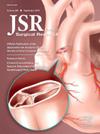Finding Value in Pediatric Liver Transplantation: When Does Volume Matter?
IF 1.8
3区 医学
Q2 SURGERY
引用次数: 0
Abstract
Introduction
Pediatric liver transplantation provides substantial survival benefit. An emphasis on value-based practices has become a central theme in many surgical fields, but have not been well-studied in pediatric transplantation. Given an increasing focus on optimizing outcomes while containing costs, defining value in pediatric liver transplantation warrants investigation.
Methods
Pediatric end-stage liver disease -era deceased donor pediatric liver transplant recipients from 2/2002 to 2/2019 were identified using the United Network for Organ Sharing Standard Transplant Analysis file data (n = 5770). Liver centers were divided into volume tertiles (small, medium, and large), and recipients were stratified by age (0-4, 5-11, and 12-18 y). The value for the index transplant episode was defined as % graft survival ≥1 y divided by mean post-transplant length of stay. Nearest-neighbor Mahalanobis metric matching was used to account for confounding when assessing the impact of center volume on value.
Results
Compared to small centers, large centers delivered better outcomes (1-y graft survival 93.7% versus 89.4%, P = 0.017) without increased resource utilization (length of stay 20.8 ± 15.6 d versus 19.6 ± 17.0, P = 0.281) during the 17-y study period. Mahalanobois-matched cohorts demonstrated a volume-value relationship (higher value care with better outcomes and decreased resource utilization) in the 0-4 age group, but not in older recipients. The 0-4 age group comprised the largest proportion of status 1B patients (21.8%, P < 0.001) and the highest utilization rate of partial liver allografts (40.9%, P < 0.001).
Conclusions
There is value in liver transplant volume in very young (0-4 y) deceased donor pediatric patients. Given improved survival of these patients in higher volume centers, regionalization of care may benefit this specific population of recipients.
求助全文
约1分钟内获得全文
求助全文
来源期刊
CiteScore
3.90
自引率
4.50%
发文量
627
审稿时长
138 days
期刊介绍:
The Journal of Surgical Research: Clinical and Laboratory Investigation publishes original articles concerned with clinical and laboratory investigations relevant to surgical practice and teaching. The journal emphasizes reports of clinical investigations or fundamental research bearing directly on surgical management that will be of general interest to a broad range of surgeons and surgical researchers. The articles presented need not have been the products of surgeons or of surgical laboratories.
The Journal of Surgical Research also features review articles and special articles relating to educational, research, or social issues of interest to the academic surgical community.

 求助内容:
求助内容: 应助结果提醒方式:
应助结果提醒方式:


